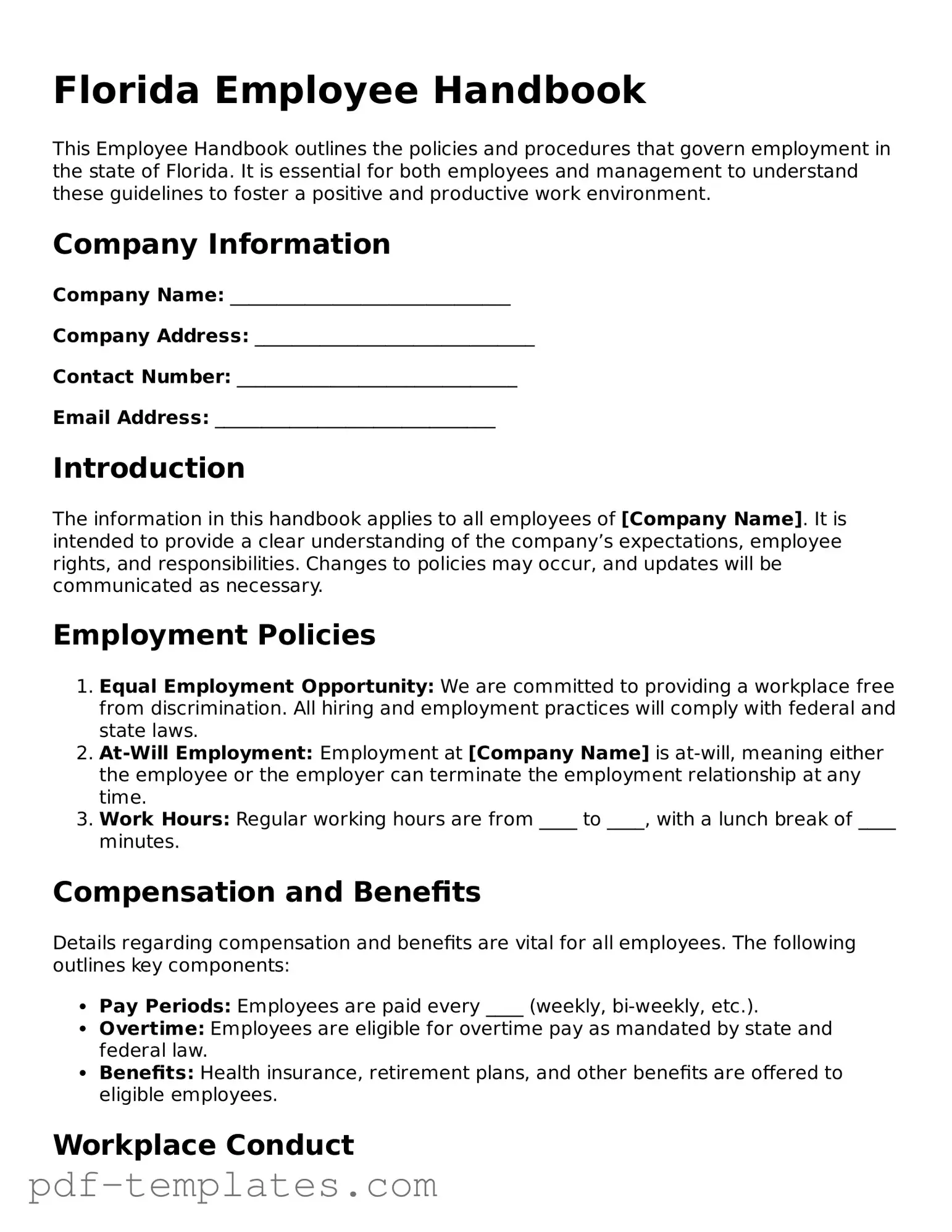The Florida Employee Handbook form shares similarities with the Employee Manual, which serves as a comprehensive guide for employees about company policies, procedures, and expectations. Both documents aim to communicate the organization’s culture and values while outlining employee rights and responsibilities. Just like the Employee Handbook, the Employee Manual often includes sections on workplace conduct, attendance, and benefits, ensuring that employees have a clear understanding of what is expected of them in the workplace.
Another document that resembles the Florida Employee Handbook is the Workplace Safety Policy. This document focuses specifically on the safety protocols and procedures that employees must follow to maintain a safe work environment. Similar to the Employee Handbook, it outlines the responsibilities of both employees and employers regarding safety practices, emergency procedures, and reporting incidents. Both documents emphasize the importance of a safe workplace and provide guidance on how to achieve it.
The Code of Conduct is another document that parallels the Employee Handbook. It sets forth the ethical standards and behavioral expectations for employees within the organization. Like the Employee Handbook, the Code of Conduct addresses issues such as harassment, discrimination, and conflicts of interest. Both documents aim to foster a respectful and professional workplace, helping employees understand the consequences of inappropriate behavior.
The Orientation Guide is also similar to the Florida Employee Handbook. This document is typically provided to new hires and serves as an introduction to the company’s policies, culture, and benefits. While the Employee Handbook offers a more comprehensive overview, the Orientation Guide provides essential information that helps new employees acclimate to their roles and the organization. Both documents work together to ensure that employees feel informed and supported from their first day on the job.
The California Motor Vehicle Power of Attorney form is a legal document that allows a car owner to appoint someone else to handle specific tasks related to their vehicle on their behalf. This can include registering the vehicle, signing documents related to the sale, and other actions that would normally require the direct involvement of the owner. It's a powerful tool for those who need to delegate these tasks due to absence or incapacity. For additional information and resources, visit All California Forms.
The Employee Rights and Responsibilities document is another important counterpart to the Employee Handbook. This document outlines the legal rights of employees, including protections against discrimination and harassment. It also details the responsibilities employees have to uphold these rights in the workplace. Similar to the Employee Handbook, it emphasizes the importance of a fair and equitable work environment, ensuring that employees are aware of their rights and how to exercise them.
The Performance Review Policy can also be compared to the Florida Employee Handbook. This document outlines the process for evaluating employee performance, including criteria for assessments and feedback mechanisms. Like the Employee Handbook, it provides clarity on how performance will be measured and the expectations for employees. Both documents aim to promote accountability and continuous improvement within the organization.
The Leave of Absence Policy is another document that aligns with the Employee Handbook. This policy details the types of leave available to employees, such as sick leave, vacation, and family leave. It specifies the procedures for requesting leave and any eligibility requirements. Similar to the Employee Handbook, it ensures that employees understand their rights regarding time off and the importance of maintaining a healthy work-life balance.
Finally, the Benefits Summary is akin to the Florida Employee Handbook in that it outlines the various benefits offered to employees, such as health insurance, retirement plans, and other perks. Both documents aim to inform employees about their entitlements and how to access these benefits. By providing clear information, they help employees make informed decisions about their employment and overall well-being.
